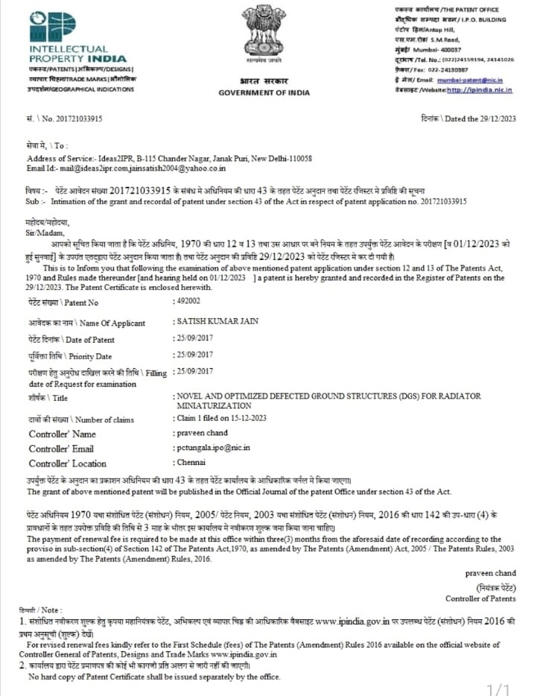With over $20 billion of dry powder awaiting deployment, the stage is set for a revival of India’s startup ecosystem, with sectors such as AI, fintech and EV poised to lead the resurgence.
India’s startup ecosystem has undergone a transformative journey this year. This shift, while tremendously challenging, ushered in a period of strategic reassessment and realignment for both startups and investors.
Amid an extended funding winter, desperate pivots, governance lapses, and layoffs, investors have lined up about $20 billion in dry powder–capital waiting to be deployed in startups.
That brings us to a pivotal question: How will this capital and emerging tech trends reshape the startup ecosystem in the coming year? To attempt an answer to that, we need to have a quick glance into the rearview mirror.
A year of reassessment and realignment
The story of 2023 began with a sobering wake-up call. Venture capital, the lifeblood of startups, receded dramatically from its zenith of $35 billion in 2021 to $8 billion in 2023. This wasn’t merely a financial fluctuation; it was a seismic shift in investor sentiment, mirroring a global trend of cautious retrenchment.
This set the stage for entrepreneurs to pivot, seeking resilience and innovation in the face of adversity. Despite the funding chill, a few startups, including Zepto and Perfios, demonstrated agility and vision, securing significant investments and propelling to unicorn status.
The investor’s calculated manoeuvre
For investors, 2023 was a tale of recalibration. With late-stage funding plummeting by over 73% to $4.2 billion, their focus shifted to a more measured approach and early-stage players, valuing sustainable business models over rapid growth. The perseverance of certain sectors, particularly fintech, which garnered $2.1 billion in funding, highlighted areas of continued investor interest.
Venture debt: A rising star
Amid this capital conundrum, venture debt emerged as a strategic partner for entrepreneurs. While VC investments retracted, venture debt in India witnessed a modest yet meaningful uptick.
The average deal size, which had once soared to ₹45-50 crore, now mostly hovered at around ₹25 crore. This recalibration wasn’t merely numerical but strategic–a pivot towards robust business models, away from the regulatory quagmires.
Venture debt, traditionally a side actor, took centrestage, offering critical support to startups, especially in sectors ripe with innovation such as electric vehicles and companies heavy on research and development.
The ecosystem’s resilient response
The year 2023 was one of reckoning for sectors such as edtech and healthtech. The overestimation of the target addressable market for digital education and teleconsultation services, plus governance lapses, amplified by market dynamics were vital learnings and tests of resilience for the ecosystem.
The Indian startup ecosystem, globally the third-largest, navigated these challenges by pivoting towards high-quality revenue. Bengaluru, New Delhi, and Mumbai, as the epicentres, continued to foster innovation despite the slowdown in unicorn creation.
The ecosystem’s response was not just reactive but proactive, with the government investing in infrastructure and pushing growth-oriented policies, maintaining India’s stature as a significant technology hub. Startups must continue to navigate this constrained funding environment, focusing on corporate governance and robust margin improvements.
Mega deals resurface
The valuation landscape of 2023 was akin to navigating through a foggy sea. Startups, in the absence of clear valuation benchmarks, turned to convertible notes and flat rounds (raising funds at the same valuations as earlier), buying time in the hope of fairer weather.
As 2023 nears its end, a flicker of optimism has sparked in the form of mega deals. High-profile investments in companies like Perfios and PhonePe have rekindled hopes. The artificial intelligence and EV sectors, along with vertical software-as-a-service, emerged as the new darlings of investors, signalling a market ripe for a rebound.
We witnessed e-commerce continuing its steady sail, undeterred by the market disruption. This resurgence wasn’t confined to equity alone; the financial services sector witnessed a remarkable surge in debt funding, heralding a more mature and diverse ecosystem preparing for a spate of IPOs in FY2024-25.
The road ahead: 2024 and beyond
Looking to 2024, the startup ecosystem stands on the cusp of transformation. With over $20 billion of dry powder awaiting deployment, the stage is set for a potential revival. Sectors such as AI, fintech and EVs, buoyed by investor interest and government support, are poised to lead this resurgence.
For entrepreneurs, the path forward involves balancing innovation with financial prudence, while investors are expected to continue their judicious allocation, focusing on startups with long-term viability.
Meanwhile, venture debt is anticipated to play an increasingly significant role, offering a lifeline to startups navigating the intricate balance of growth and sustainability.
Charting new waters
As the Indian startup journey continues into 2024, it will likely be a narrative of adaptability, strategic foresight, and collaborative growth. Entrepreneurs, investors, and the broader ecosystem are jointly scripting a story of overcoming challenges and seizing opportunities.
The ecosystem is not just poised for gradual recovery but for a period of strategic growth, potentially leading to an increase in the number and quality of successful ventures and a more robust, diversified startup economy by the end of 2024.
Ishpreet Singh Gandhi is the founder and managing partner at Stride Ventures
source/content: livemint.com / opinion (headline edited)
